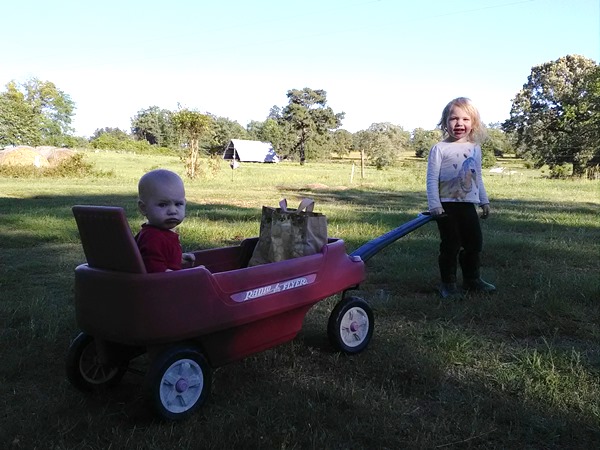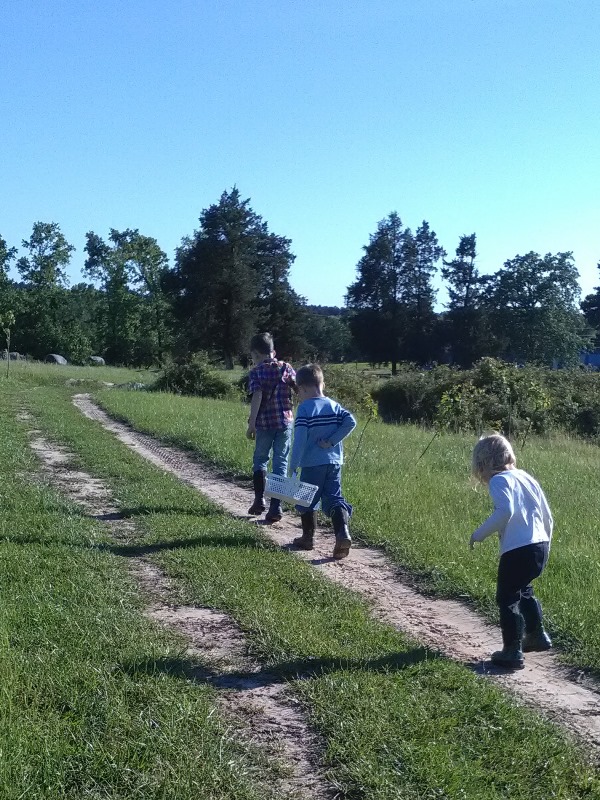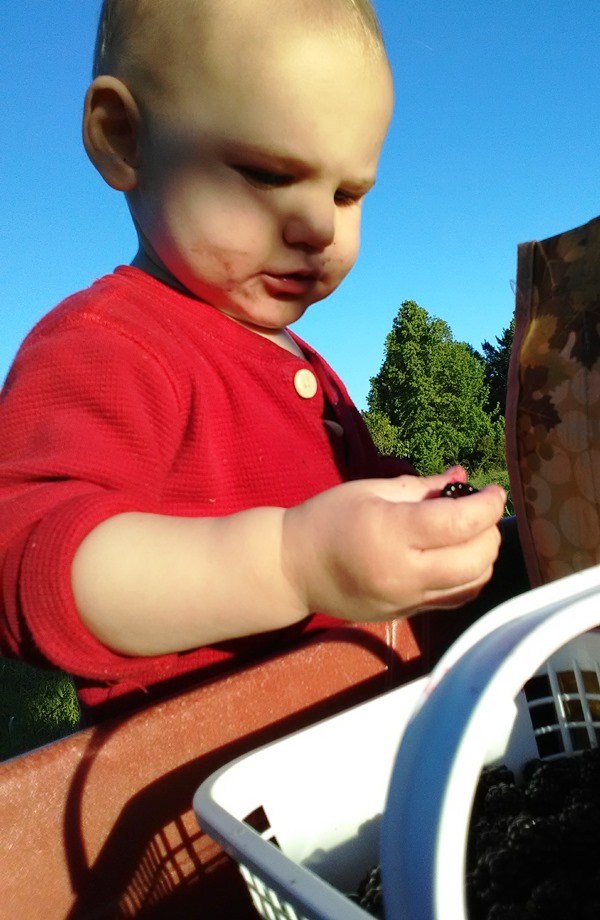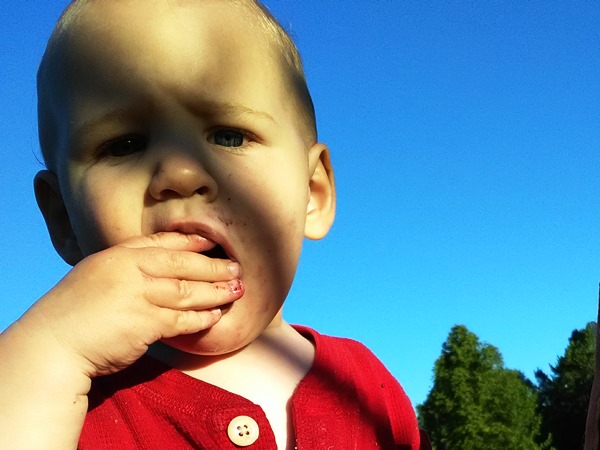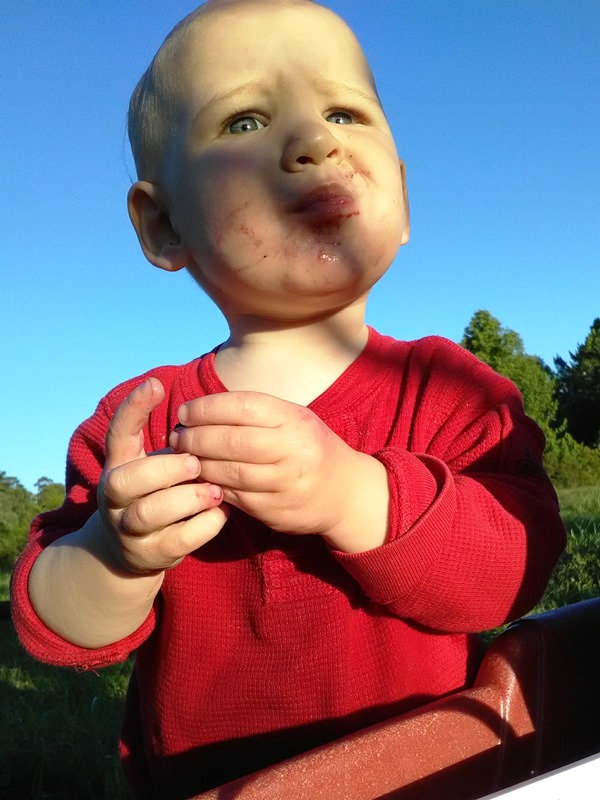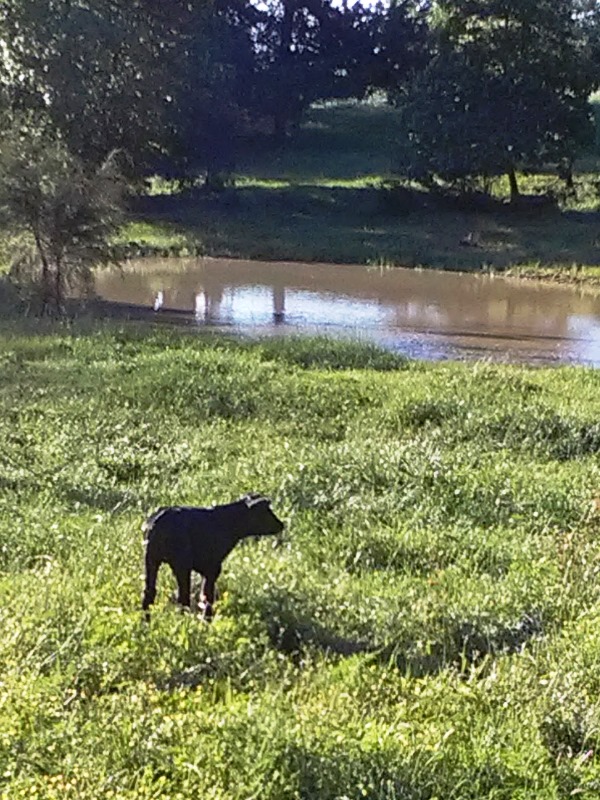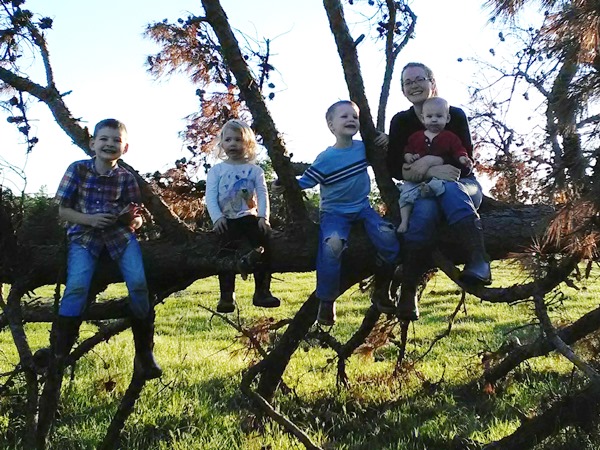You may know by now that we are one of those geeky homeschool families, where every discussion with the kids is a “learning opportunity.” It doesn’t help that Matt and I were shamefully nerdy before we had kids. Our poor children can’t get a straight answer out of us when it comes to their questions about the world around them! 🙂
We use a fabulous curriculum called Classical Conversations, and during the middle school and high school years that we look forward to, many sages of classical home education advise you to use the maxim, “Define your terms.”
They’re right. You can’t have a meaningful conversation with anyone unless you’re using your terms in the same way.
So when you read headlines like, “Grass-fed beef is no healthier than conventional,” before you can understand the meaning of their conclusions, you have to understand just a bit about the industry.
Where Do Grass-fed Cows Come From?
No matter how badly you may want to farm, everyone knows cows don’t appear out of thin air—you have to buy seed stock from someone who’s already doing it. In our quest to continue expanding our beef herd, we’ve “shopped” around for cattle. Some of the herds we considered were as far away as Wisconsin, some were way down in central Texas, some were in Missouri or Alabama or Arkansas or Oklahoma, and some were scattered around East Texas, and of course, the closer to us we could buy, the better.
I can tell you first hand—cow-shopping is not like car-shopping or house-shopping. The cows keep making more cows just like them, so whatever characteristics they start out with, the babies will have also. With a car or house, if something doesn’t work right, you can just fix or replace the quirky parts. But you can’t change genetics, so if you buy a cow that’s not a good fit for your climate or operation, it’s just going to go downhill from that point.
Why are good genetics important?
Well, when it comes to cows, grain-feeding is a type of crutch. If a cow is “nice and fat,” in the dead of winter or in the heat of summer, if she’s been supplemented with grain, it’s very likely she will always need to be supplemented with grain in order to stay fat and healthy through the tough times of year. The benefits of really-grass-fed beef are too extensive to deal with in this post, so let’s just assume we’re wanting truly all-grass-fed beef that’s grass-fed all year long.
That’s where defining one’s terms comes into play.
On more than one occasion, even right here in East Texas, we’ve visited operations that, on the phone, assured us that they were all-grass, nice fat cows, very healthy, very clean.
What you’re about to read is exactly why you need to go visit the farm you buy from, at least once, and ask LOTS of questions.
We went to visit one farm, not too far from us, that had been recommended by the friend of a colleague. The owner drove us out to the field in his truck, and we were immediately suspicious of his claims to “grass-fed.” There were lots of trough structures around, and hardly any healthy pasture, in spite of the wet year and the not-too-hot temperatures up to that time. It was a large field, and when we finally found the yearlings, they came over to the truck, curious and searching.
Cattle are not particularly curious animals. Not like chickens or cats. They don’t come up to vehicles unless they are accustomed to doing so. Unless something has lured them. Unless they’re expecting a treat. That was our first clue. The cows were WAY too excited to see us.
We asked a few more questions. The truth finally came out. “Well, we do feed them cubes sometimes.”
How often?
“Well, just when we need to move them.”
Ok, so how often?
“Uh, just about every day.”
Oh. Every day. Every day? Our definition of grass-fed was clearly different than this man’s.
We drove a little farther in search of his breeding herd.
What’s that big tub over there?
“Oh, that’s just fly control we put out this time of year.”
Do all the cows get it?
“Well, no, just the yearlings.”
What’s in it?
“Oh, just a little bit of Ivermectin.” (an insecticide that is terrible for soil health)
Not that we were even remotely interested at this point, but perhaps just to try to get the guy to realize how ridiculous his own claims were… We asked about the “fly lick:” No protein? (aka soybeans and/or corn)
Wrong. A simple check of the label lists “grain by-products.” Cows don’t eat poison unless it tastes good. Apparently this guy’s definition for “all natural grass-fed” beef did not match ours or most customers’ definitions!
Needless to say… we didn’t buy any cows from that operation.
Buyers, beware!
Being in the industry, we know what we’re looking for, so the scariest thing about this whole incident was that the man had heard about the higher prices he could get for “grass-fed beef,” and clearly was contemplating marketing his beef accordingly.
If you think this is just an isolated incident, here’s another story. Again, in a quest to find some good grass-fed genetics, Matt drove all the way to Kansas—that’s upwards of 8 hours one-way, with a 30-foot cattle trailer—only to find out that the seller had misrepresented the breeding heifers he had for sale. A two-day trip for nothing. Just an empty cattle trailer and a continued search for good animals. The industry is riddled with downright deceit!
It’s far worse in the supermarket, where buyers are very far removed from sources, maybe even a half-a-world away, and no one is asking the hard questions—there’s no one to ask!
Well, the label says, “Grass-fed.” They couldn’t call it that if it wasn’t true, right?
Pap-Pap (Matt’s dad) is an avid fan of murder mystery novels, and once shared this quote with me from Dorothy Sayers’ novel, “Murder Must Advertise:”
“Truth in advertising,” announced Lord Peter sententiously , “is like leaven, which a woman hid in three measures of meal. It provides a suitable quantity of gas, with which to blow out a mass of crude misrepresentation into a form that the public can swallow. Which incidentally brings me to the delicate and important distinction between the words ‘with’ and ‘from.’ Suppose you are advertising lemonade, or , not to be invidious, we will say perry. If you say ‘Our perry is made from fresh-plucked pears only,’ then it’s got to be made from pears only, or the statement is actionable; if you just say it is made ‘from pears,’ without the ‘only,’ the betting is that it is probably made chiefly of pears; but if you say, ‘made with pears,’ you generally mean that you use a peck of pears to a ton of turnips, and the law cannot touch you— such are the niceties of our English tongue.””
Define Grass-fed
The last nail in the coffin of truth-in-advertising of grass-fed beef is this: A couple of years ago the overseers of this particular industry (the USDA) quietly deregulated the term “grass-fed” (which was poorly defined even at that time), stating that they’d decided it was really a marketing claim, and that companies should be able to define it for themselves, and customers could just visit individual brand websites to find out what the internal meaning of “grassfed” is for a particular company.
Since most consumers want to do a big research project in the middle of their grocery shopping expedition… Not!
The best way to be sure is to define your terms, ask lots of questions, then buy from a farm you can trust and visit. And when you do go, make sure the cows don’t follow the ATV like the pied piper, looking for “candy!”
So… want some really grass-fed beef right here in East Texas? Here are some easy meal ideas for this summer!

